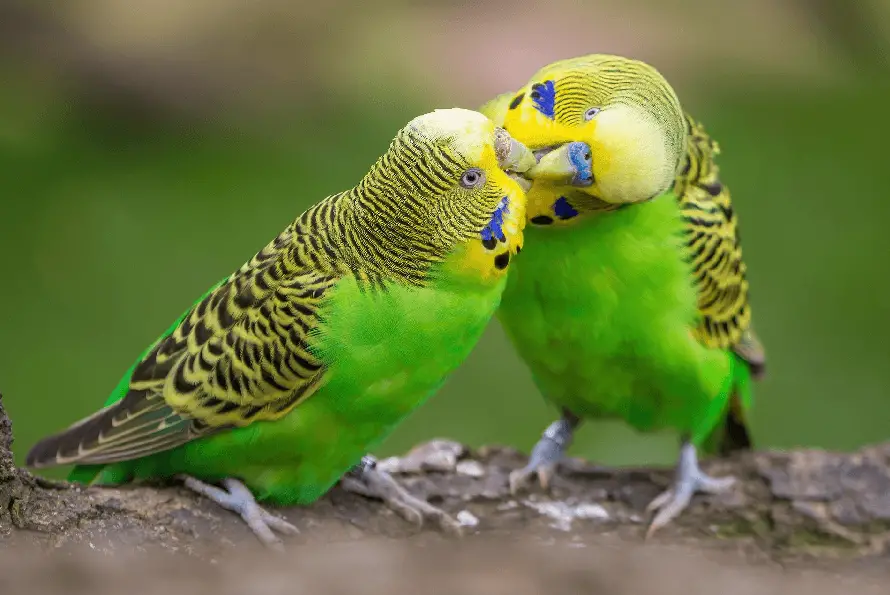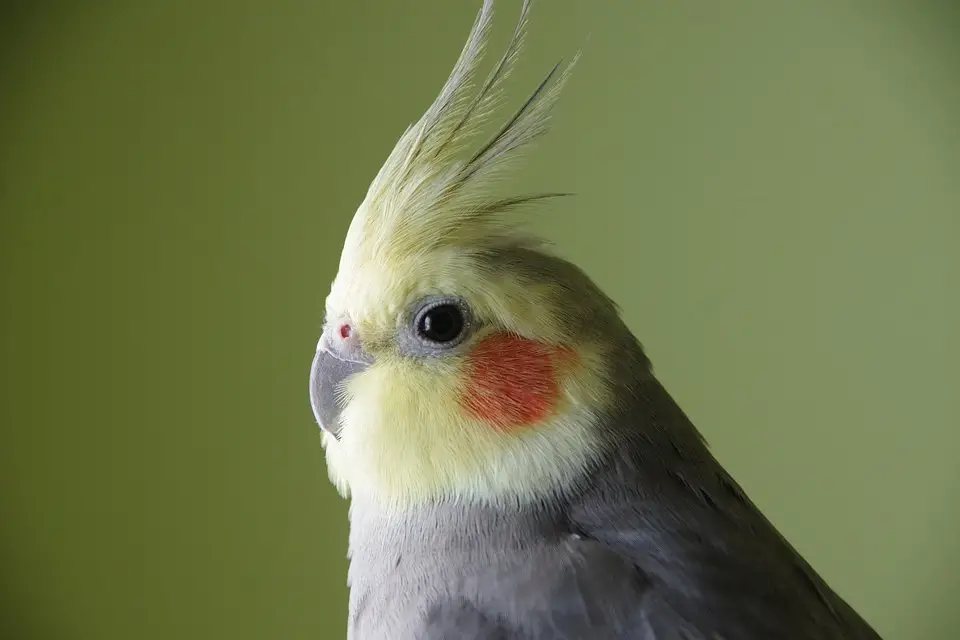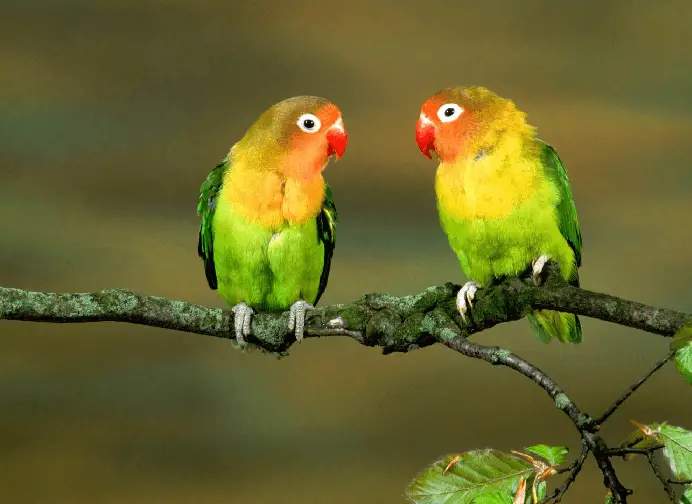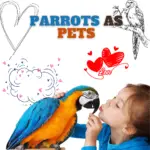5 Pet Birds Great for Kids
Top 5 Best Parrots For Beginners: First of all, before adopting a bird, you must ask yourself if it is a companion that really suits you. Most birds, especially parrots, live very long and are a long-term commitment. In addition, due to their intelligence and very social nature, birds require a complex and stimulating environment both mentally and physically.
They need proper socialization as well as good basic training in order to avoid problems of undesirable behavior for you, but above all harmful to the well-being and health of the bird.
Note: If you already have one or more birds at home, make sure that the species you want to adopt is compatible. Some birds cannot live together and altercations between them pose a significant risk to their safety and health. For more information on this topic, see the Parrot to adopt.
Top 5 Best Parrots For Beginners With plumage as colorful. First and foremost, new parrot owners should educate themselves about the different types of parrots in order to determine which feathered friend is best suited for their home and lifestyle.
Small and medium-sized parrots are ideal for starting birds for beginners.
Budgie Bird Parakeets

Top 5 Best Parrots For Beginners
Colorful, small, affectionate, and affordable are some of the qualities of parakeets. Which makes them excellent starting parrots for beginners. Like most “parrots subspecies”, there are many different kinds of parakeets in the world. They are all intelligent creatures. The most common type of parakeet is called a budgie. Although generally a little shy at first, budgies are easy to tame and are known for their loving personalities and ability to bond closely with their human family. Many parakeets learn to speak with small voices that make them endearing as well as entertaining.
A wavy parakeet is a very good choice, especially for a first bird. They are birds that are easily tamed. It is a small bird of about 30-40 g that can be found in several colors ranging from yellow to purple. Parakeets can live from 6 to 18 years. This bird usually does not have destructive behavior, does not scream very loudly, and can even learn to speak. The male from the female is distinguished by the color of the waxes (nostrils). If they are blue, it is a male, if they are rather yellow to pink, it is a female. Males are often better talkers than females. They are gregarious birds, so it is recommended to adopt more than one at a time, ideally of the same sex, to avoid an unwanted litter.
- Size: 6 to 8 inches tall
- Weight: ~1 ounce
- Lifespan: 5 to 8 years
- Cost: $10 to $35
Cockatiels

Top 5 Best Parrots For Beginners
Cockatiels are small to medium-sized parrots that rival parakeets in popularity. Although they are able to imitate sounds and words, most cockatiels prefer to hiss. Similar in appearance to cockatoos, cockatiels are beautiful, intelligent, and loving creatures who can enrich the lives of their human families for many years to come. Cockatiels are known to attach quickly to their owners and most like to snuggle up to them for cuddles.
- Size: 11 to 13 inches tall
- Weight: ~3 ounces
- Lifespan: 10 to 14 years
- Cost: $50 to $150
Parrotlet

Top 5 Best Parrots For Beginners
Do not be fooled by their small size of twelve centimeters maximum. parrotlet is active and curious miniature parrots with larger-than-life personalities. These little bundles of joy usually don’t speak much, but what they lack in vocal ability they make up for with affection. Most parrotlet enjoys human contact and often bend down to expose their necks and entice their human companions to give them a little caress.
- Size: ~4.5 inches tall
- Weight: ~1 ounce
- Lifespan: 15 to 20 years
- Cost: $120 to $350
Lovebird

Top 5 Best Parrots For Beginners
Known as “pocket parrots,” lovebirds bring together all the intelligence and personality of their larger counterparts in tiny bodies of 12 to 18 centimeters. Lovebirds get their name from their reputation for forming strong bonds with their mates. Their affectionate and loving nature makes them likely to bond closely with their human companions as well. This is also what makes them such popular birds.
- Size: 6 to 6.5 inches tall
- Weight: ~2 ounces
- Lifespan: 12 to 15 years
- Cost: Price can vary wildly, but expect around $200 or more
Green-cheeked conures

Top 5 Best Parrots For Beginners
While not as colorful or popular as sun conures, green cheeked conures are a much better choice for novice bird owners. Simply because they make less noise. All of the conure family are comical, playful, and affectionate feathered friends who can learn to speak but are best known for their mimicked sounds and screeches. The noise level of all types of conure is higher than that of most other small and medium-sized parrots. However, the green-cheeked conures are the quietest of the bunch.
- Size: 9 to 11 inches tall
- Weight: ~2 to 2.5 ounces
- Lifespan: 10 to 25 years
- Cost: $150 to $350
TOP 10 MOST UNDERRATED PARROTS | Great Parrots for A Beginner
SOURCE:Victoria Ryann
Best parrots for beginners
Psittaciformes are the most popular pet birds. The parrot family includes more than 360 species of birds of all sizes.
Here is a brief description of the most common species found in captivity:
-
Budgerigar
A wavy parakeet is a very good choice, especially for a first bird. They are birds that are easily tamed. It is a small bird of about 30-40 g that can be found in several colors ranging from yellow to purple. Parakeets can live from 6 to 18 years. This bird usually does not have destructive behavior, does not scream very loudly, and can even learn to speak. The male from the female is distinguished by the color of the waxes (nostrils). If they are blue, it is a male, if they are rather yellow to pink, it is a female. Males are often better talkers than females. They are gregarious birds, so it is recommended to adopt more than one at a time, ideally of the same sex, to avoid an unwanted litter.
-
Cockatiel
Cockatiels are also a very good choice for a first bird. They are birds that are easily tamed, like to be petted, and do not have very destructive behavior. They are also small birds of about 75-100g and they can live from 8 to 20 years. Males can talk, but they are mostly good whistlers. There are a variety of colors, but in the most popular species, we find the “lutinos” (white) whose females have yellow transverse streaks on the tail feathers. In the “grey” variety, the male is distinguished from the female by its very orange cheeks. Finally, in the “pearl” variety, the female has white spots on the back.
-
Large parakeet (Collared Parakeet, Mustache Parakeet, Alexander Parakeet and Pink or Plum Head Parakeet)
Large parakeets are birds of about 100-250 g and can live between 20 and 30 years. They are very active and acrobatic birds, but they are difficult to adapt to life in cages. It is, therefore, a bad choice for home living. They require a large aviary and a more experienced owner as they are usually difficult to tame, tend to bite, and speak little.
-
Lovebird
Inseparable are small birds of 30 to 46 g that live about ten years. They are entertaining birds that can create very strong bonds with their owner. However, they are still birds that are difficult to tame and tend to bite a lot. Taming is especially difficult if the birds are bred by their parents, but it happens that even when they are raised by hand that it is difficult once they reach sexual maturity. Females have a stronger character than males and are rather territorial, so precautions must be taken when introducing a new individual into a cage. Inseparable people cannot learn to speak, and their cry is very high-pitched and can be unpleasant.
-
Parrotlet
The Parrotlet is adorable little bird of 25 to 50g that can live between 10 and 20 years. They are birds that are easy to tame and not very noisy. They are a good choice as first birds. They usually have a beautiful personality very comical. They can learn to speak and are generally good imitators.
-
Conures
There are several species of conures including morphs (colorations) just as varied. The species most frequently encountered as pet birds are the green-cheeked conure, the sun conure, and the Jandaya conure. Conures are usually good pet birds that have beautiful personalities. They are social and love to play, real little clowns. They however have a piercing cry and are not good talkers, sensitive ears abstain because they can be very noisy! They are relatively small birds weighing between 80 and 200g and living between 15 and 30 years. They can sometimes be difficult to tame and are destructive. It is particularly important to provide them with a stimulating environment, good education as well as a large safe space for them to be active.
-
Amazon
Amazons are larger parrots, weighing between 350 and 600g, and can live up to 80 years (between 15 and 80 years)! They require a slightly more experienced owner, so they are not recommended as a first bird. They are very intelligent and social birds. This means that they require supervision and a very stimulating environment for their well-being. They are good talkers and good imitators, but they can be garish. Patience is required to tame an Amazon, and these are birds that are usually not very affectionate. Some birds tend to be aggressive, especially in the breeding season, and to be destructive. You should also know that in the wild Amazons are considered threatened or in danger of extinction.
-
African Grey
African grays, about the same size as amazon and cockatoo (300-550g), can become very good pets, but require a more experienced owner and are to be avoided as a first bird. They are very intelligent and sensitive. They have been the subject of several studies on cognition, and their intelligence can be compared to that of a 4-year-old child. So they need a lot of intellectual stimulation. He is arguably the best talker of all birds. Research has shown that they go beyond imitation and are probably able to communicate the following reasoning. On the other hand, they can be very noisy when they offer themselves a little bit of Josette! African grays tend to make a lot of feather dust (keratin powder), so they are not recommended for people with asthma, allergy, or lung disease.
-
Cockatoo
The most commonly found captive cockatoo species are the Goffin’s cockatoo, the white cockatoo, the yellow-crested cockatoo (small, medium, and large), and the rosaline cockatoo. This is a fairly large bird between 200 and 800g, which can live between 30 and 80 years. It requires once again, a more experienced owner. They are very intelligent and affectionate birds, they love to be cuddled. On the other hand, they require a lot of attention, education, and intellectual stimulation. Their very powerful and sharp beak can inflict significant injuries and do a lot of damage when they are destructive. They are good talkers although they can be very noisy. They love music and like to dance. They require a lot of space and do not tolerate well-being in a cage for long periods of time. The cockatoo just like the African gray produces a lot of feather dust, they are not recommended for people with asthma, allergy, or lung diseases.
-
Eclectus
The Eclectus is a beautiful bird, males have a coral beak and vibrant green plumage, females have a black beak and bright red plumage. These are birds from 400 to 550g living from 30 to 60 years. The Eclectus is rather independent and do not appreciate caresses so much. They can be difficult to tame and slow in their learning. Females tend to have a mood swinging and be aggressive. Males are generally kinder.
-
Macaw
Macaws are the largest parrots found in captivity, they are between 200 and 1500g. This is an imposing bird that requires a lot of space (ideally an entire room). Macaws scream very loudly and are destructive, which can be problematic given their size. Moreover, their very powerful beaks and talons can inflict serious injuries. They can learn to speak and are usually very sociable and intelligent. But they require a lot of attention and little care. Macaws can live from 15 to 80 years.
-
Lori and Lorikeets
Lorises and lorikeets have the particularity of being nectarivorous, that is, in nature, they feed on nectar and pollen exclusively, unlike other Psittaciformes which are rather granivorous. The management of their diet in captivity is therefore much more complex than other birds. They are all the more prone to health problems related to inadequate diet or spoiled food. In addition, their droppings tend to be very liquid and sticky and therefore more difficult to clean. They are, however, very colorful birds with very active, friendly, and playful personalities. They need a lot of space to exert themselves. They speak little and have a very shrill cry.
There are obviously many more species of parrot found as pets such as Quakers, Jardines, Youyou Parrots, Caicos, etc. We invite you to inform yourself about their characteristics before considering adoption. Do not hesitate to ask the opinion of your veterinarian for exotic animals!
Here is a summary table of common species:
Table of common species
| Cash | Region of origin | Average longevity 4
(years) |
Weight
(grams) 5 |
Talent for speaking | Recommended owner type |
| Alexandrine | Asia and North Africa | 20 to 30 | 220 to 300 | Good | Intermediary |
| Amazon | South America | 50 to 60 | 200 to 800, depending on the species | Good | Experienced |
| Macaw (large species) 1 | South America | 50 to 70 | 810 to 1600 | Good | Experienced |
| Macaw (small species)2 | South America | 30 to 40 | 150 to 400 | Good | Intermediary |
| Cockatoo | Australia | 30 to 60 | 275 to 1000, depending on the species | Good | Experienced |
| Parrot | South America | 20 to 30 | 145 to 170 | Good | Intermediary |
| Cockatiel (calopsitte parakeet) | Australia | 18 to 25 | 75 to 150 | Fair (especially males) | Beginner |
| Conures | South America | 20 to 30 | 60 to 300 depending on the species | Good | Beginner to Intermediate |
| Éclectus | New Guinea and surrounding islands | 50 to 70 | 375 to 550 | Good | Experienced |
| African Grey Congo | Africa | 50 to 70 | 400 to 500 | Excellent | Expériementé |
| African grey timneh | Africa | 50 to 60 | 275 to 375 | Excellent | Experienced |
| Inseparable | Africa | 15 to 20 | 40 to 50 | Fair (especially aggressive females) | Beginner (intermediate for females) 3 |
| Jardine | Africa | 25 to 35 | 180 to 220 | Good | Intermediary |
| Kakariki | New Zealand and the surrounding islands | 20 to 30 | 60 to 80 | Passable | Intermediary |
| Lori | New Guinea, neighbouring islands, Australia and Tasmania | 30 to 35 | 120 à150 | Good | Experienced |
| Meyer | Africa | 20 to 30 | 100 to 140 | Good | Intermediary |
| Brown-headed parrot | Africa | 20 to 30 | 115 to 140 | Good | Intermediary |
| Red-bellied parrot | Africa | 20 to 30 | 120 to 160 | Good | Intermediary |
| Cape parrot | Africa | 40 to 50 | 275 to 375 | Good | Intermediary |
| Collared parakeet | Asia and North Africa | 25 to 40 | 110 to 120 | Good | Intermediary |
| Mustache parakeet | Asia and North Africa | 20 to 30 | 110 to 150 | Good | Intermediary |
| Plum-headed parakeet | Asia and North Africa | 20 to 30 | 115 to 140 | Good | Intermediary |
| Bourque parakeet | Australia | 12 to 15 | 40 to 50 | Passable | Beginner |
| Melanurus parakeet | Australia | 20 to 30 | 170 to 180 | Passable | Intermediary |
| Budgerigar | Australia | 5 to 12 | 30 to 40 | Excellent (especially males) | Beginner |
| Pionus | South America | 35 to 45 | 180 to 280, depending on the species | Good | Intermediary |
| Quaker | South America | 20 to 40 | 80 to 150 | Excellent | Intermediary to experienced
|
| Rosella | Tasmania, Australia | 25 to 30 | 90 to 170 | Passable | Intermediary |
| Parrotlet Catherine | South America | 15 to 25 | 45 to 55 | Good | Beginner |
| Celestial Parrotlet | South America | 10 to 25 | 25 to 35 | Fair (especially males) | Beginner to Intermediate |
| Senegal Parrot | Africa | 20 to 30 | 125 to 170 | Good | Experienced |
1 Blue and gold macaw, Hyacinth Macaw, Scarlet Macaw, Red-and-green Macaw, military macaw
2Chestnut-fronted macaw, Blue-winged macaw, Red-shouldered macaw, Hahn’s macaw
3 Many inseparable females become very aggressive as they reach adulthood (about 1 year).
4 The available information regarding the longevity of parrots has been compiled for several years. However, in the last twenty years, several notable improvements have been made to the conditions of the captivity of parrots (feeding, hygiene, health care). It is, therefore, possible that the longevities known today will be revised upwards in the future.
5 Weights are averages and are presented for illustrative purposes only. It is by assessing the state of the flesh of a bird (by palpation of the chest muscle) that we can say with certainty whether its weight is adequate.
Some Considerations
Despite minor differences between species, all members of the parrot family demand a considerable investment of time, money, and attention from their owners. Parrots are long-lived animals. An average life expectancy of 10 to 80 years. They have special needs for attention and social interaction.
This is why adding a feathered friend to the family requires a far greater commitment than what might be required with more traditional pets. Responsible bird parents seriously consider factors such as noise level, habitat Parrot Room, and nutritional needs: Parrot Nutrition and Diet, personality traits, and other unique needs before committing to adopting a parrot.
If you’re determined to adopt one of these magnificent creatures, we’ve got you covered! We offer a wide choice of parrot cages. Discover our collection by clicking on the image below.
If you are a beginner and would like us to cover other topics, feel free to suggest some in the comments below. If you own one of these species, let us know about your experiences.


























